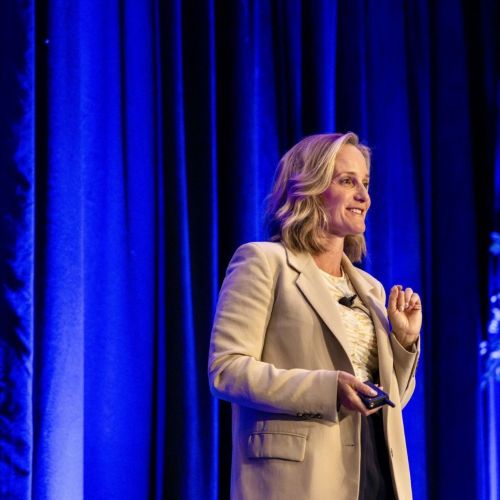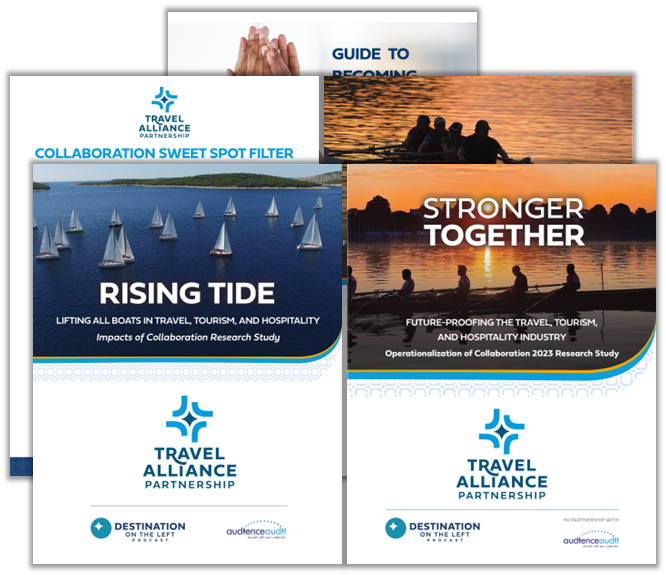Reclaiming Imagination in Business, with Susan Robertson
Episode 444
On this episode of Destination on the Left, I talk with Susan Robertson, Possibility Architect at Sharpen Innovation and Harvard instructor. Susan shares why so many of us lose our sense of imagination as we grow up and how we can get it back by embracing curiosity and being open to mistakes. We also discuss how even the wildest brainstorming ideas can lead to real breakthroughs and role-play through a few examples to demonstrate that creativity isn’t just for artists; it’s something we can all tap into to spark fresh ideas.

What You Will Learn in This Episode:
- How Susan Robertson transitioned from a career in consumer packaged goods marketing to becoming a leading expert in creative thinking and innovation
- Why many adults lose their sense of creativity as they mature, and what neuroscience and research reveal about unlearning imagination and originality
- What common mental roadblocks, like negativity bias and “yes, but” thinking, prevent teams and individuals from generating new ideas and how to overcome them
- How Susan’s GPS (Great Problem Solving) methodology can be applied to brainstorming sessions to unlock more creative and practical solutions
- Why embracing divergent (expanding) and convergent (narrowing) thinking is essential for effective ideation and problem solving during group sessions
- What practical techniques you can use to encourage wild ideas in brainstorming, and how to turn seemingly “crazy” thoughts into innovative, actionable outcomes
- How replacing judgmental language with open-ended “how might we” questions improves collaboration, sparks better ideas, and leads to breakthrough results
How Negativity Bias Sabotages Innovation
Internal psychology, not lack of talent, is often the biggest barrier to fresh thinking. Susan points to our shared cognitive biases, especially “negativity bias,” as a prime culprit. This is the tendency for negative experiences or feedback to have a greater impact on our thoughts and behaviors than positive ones.
In a group or brainstorming session, this bias often emerges as “yes, but” thinking. Someone suggests an idea, and the immediate response is to agree superficially while pointing out flaws, the “yes, but” that immediately follows. The thing is, though, if you’re never willing to be wrong, you’re never going to try anything different or imagine anything that doesn’t exist, shooting down the impractical points right away can stifle the kind of out-of-the-box thinking needed for innovation.
Transform Brainstorms into Breakthroughs
Susan shares a solution in the form of her GPS methodology, which stands for Great Problem Solving. Here’s how it works:
- List What’s Great – When an idea is proposed, first focus on what’s interesting, valuable, or potentially exciting about it, even if the idea seems wild or impractical, make a detailed list of these positives.
- Frame Problems as Opportunities – Instead of jumping to objections, articulate any concerns as “How might we…?” or “How can we…?” questions. For instance, if an idea seems too expensive, avoid the instinctive “That will cost too much!” Instead, ask, “How might we make this more affordable?”
- Iterate and Combine – Use this list of positive elements and problem-solving questions to evolve the idea. Change as much as needed to address concerns, while preserving what’s new and valuable.
Sparking Wild Ideas or the “Get Fired” Technique
To truly innovate, sometimes you have to go wild on purpose. Susan’s favorite technique is to ask everyone to suggest a solution so extreme they’d be fired if it were ever implemented. These over-the-top ideas get creative juices flowing and give psychological permission to break free from conventional limits.
Once those “get fired” ideas are out there, use Susan’s GPS (Great Problem Solving) method to extract their most intriguing or practical elements and rework them into real-world solutions.
Susan recommends making a clear distinction between two modes in group innovation: divergence (generating many wild and varied ideas) and convergence (narrowing down and selecting the best options). By keeping these phases separate—and signaling to the group which mode you’re in—you encourage participation and avoid shutting down ideas prematurely.
Resources:
- LinkedIn: https://www.linkedin.com/in/susanrobertson/
- Website: https://www.susanrobertsonspeaker.com/
We value your thoughts and feedback and would love to hear from you. Leave us a review on your favorite streaming platform to let us know what you want to hear more of. Here is a quick tutorial on how to leave us a rating and review on iTunes!







